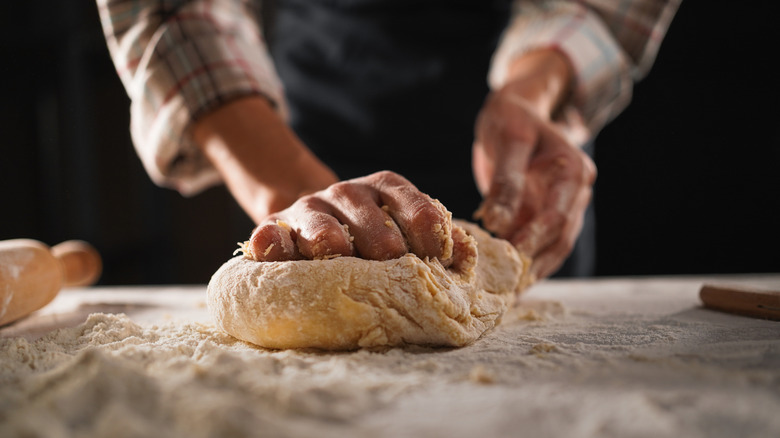Imagine if, the next time you built your expert-approved cheese and charcuterie board, you not only sliced a baguette or simply assembled some toast points, but you also incorporated some homemade pickle bread. It would be delicious, it would be a conversation starter, and yes, it would also be a little more work than most are hoping for when arranging the mostly store-bought party favorite, but not much. You can also, of course, think outside the board and swap your pickle bread for other varieties any time a little kick of briny, perky flavor is called for.
If you already have a favorite sandwich loaf recipe, you can handily exchange its cup or two of water with the pickle brine that you might have otherwise discarded for an easy enhancement. Taste the brine first, of course, to see whether you need to reduce the amount of salt you’d typically add to other ingredients, like bread flour and yeast. You can also add actual chopped pickles for an additional white bread upgrade. Just be aware that the one-time cucumbers will introduce a bit of extra moisture. Try adding a little more flour as needed, just a sprinkle at a time, to help regulate the texture.
Other uses for your homemade pickle bread
Do not expect any zany, Willy Wonka-like flavors from your pickle bread, but rather the subtle essence of the vinegar-forward and dill-scented snack. You don’t need to worry about the reactive liquid harming your bread’s integrity either, as its acidity can also have a kind of tenderizing effect that leads to a softer finished product that still stands up to your standard bread loaf applications.
In addition to the aforementioned charcuterie, sandwiches are the obvious home run use here. After all, pickle bread would be a particularly terrific and tangy way to dress up a classic grilled cheese or a tuna salad. Still, it would also make for outstanding salad croutons, or even as a panzanella itself. You can also blend it down to crumbs to provide a zippy, crispy coat on your next baked or fried chicken. Pickle brine isn’t just for white bread adaptations either; it’s also been known to pop up in sourdough and rye preparations as well.






